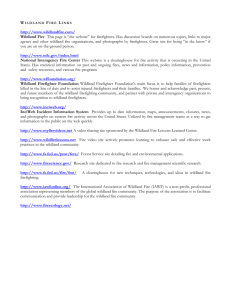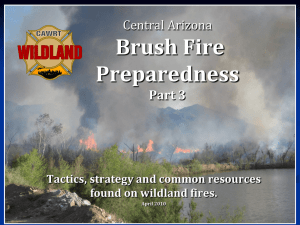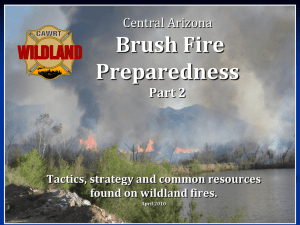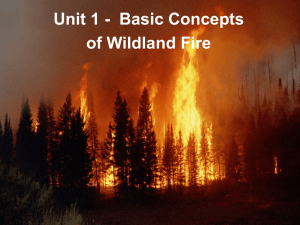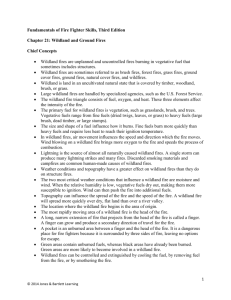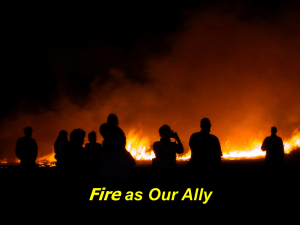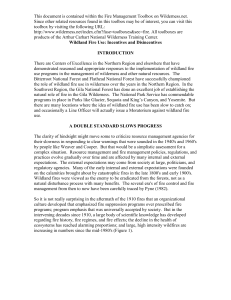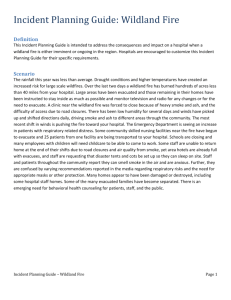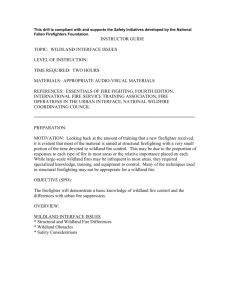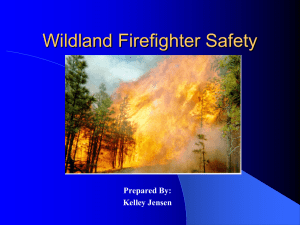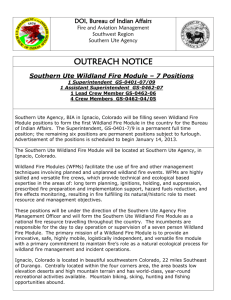*****************Q***********Q*******Q*******Q***Q***Q***Q***Q***Q
advertisement
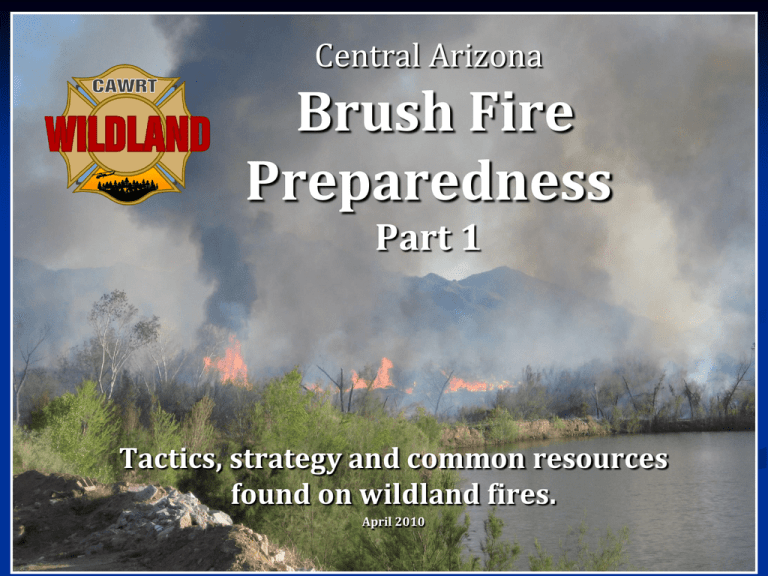
Central Arizona Brush Fire Preparedness Part 1 Tactics, strategy and common resources found on wildland fires. April 2010 Disclaimer and Intent Like all fire fighting operations, wildland fire control and suppression is inherently dangerous. This presentation is designed to increase fire fighter safety and awareness at local brush fire incidents in the Phoenix metropolitan area. It is not designed to teach in-depth and/or complex wildland fire suppression techniques, skills or tactics, nor replace National Wildfire Coordinating Group (NWCG) standardized training. The overall intent of this presentation is to promote the safe operations of structural fire crews responding to initial attack wildland fires which have the potential to increase into complex fire incidents requiring multiple fire agency resources. This training can be used on an individual, company or department-wide basis. In the valley, there is a cyclical event of rain followed by an abundant growth of grasses and other light fuels in Maricopa and Pinal Counties. This then can lead to an active desert fire season on inner-city buttes, desert areas and river bottom channels. In similar past cycles, the Phoenix metro area has seen some large fires that are often initially attacked by fire departments from the Phoenix/Mesa Automatic Aid Systems. In an effort to promote fire fighter safety and effective coordination of resources, this presentation is designed to: 1. Present some of the basic concepts in wildland fire behavior Phoenix 2. Identify various fire management agencies found in the Phoenix area 3. Identify standard national resource types (NIMS compliance) 4. Present basic strategies and tactics. From the Maricopa County CWPP: wildland fuel hazards during extraordinary rainfall years. What is a wildland fire? Phoenix Regional SOP: “Any fire exceeding 50 acres will be declared as a "Wildland Fire.“ National Wildfire Coordinating Group (NWCG): Any non-structure fire that occurs in the wildland. (A national standard term) Layman’s terms: It is a non-structural fire of any size in naturally occurring vegetation. Urban Sprawl & the Interface The Phoenix metropolitan area has grown and now includes homes and communities moving into a more significant “Urban Interface”. The wildland urban interface or inter-mix is where the two geographical areas meet or mix. Examples include North Scottsdale, North Phoenix, Apache Junction or river bottom areas. Re-occurring cycles of frequent or significant valley wildland fire events are seen every few years depending on weather cycles (El Nino). Examples: • 1995 Rio Fire (Scottsdale) • 2004 Black Canyon City (Structures destroyed, Yavapai County and Phoenix Regional Dispatch units assigned.) • 2005 Cave Creek Complex Fire • 2008 Ethan Fire (Gila River) • 2010 Patriot Fire (Scottsdale) Ethan Fire, Gila River Reservation (2008) Does this mean we are like Southern California now? No. In years with extra fuel loading, there is higher fire potential. Depending on your fire station location, you may see an increase in the number of responses to brush fires, the size of the fires, or possibly an increased potential for an interface fire incident. It can also mean that you might be moved-up or respond to a fire not normally found in your first-due area. It also means we may assign fire fighters to suppression actions of which they do not encounter frequently, nor are they highly trained or experienced due to limited occurrences. Wildland Fuel Types of the Phoenix Area Native grasses Shrub Mesquite Salt Cedar (Tamarisk) Invasive (non-native) grass species These are all considered “light flashy fuels” and can carry fire rapidly. They are substantially influenced by wind speeds and direction. Valley Fuel Examples: North Phoenix Light flashy fuels Lake Pleasant area Inter-mix area North Phoenix Influences on a wildland fire: Fuel Load = amount of fuel available to burn. Fuel type = flashy fuels (fast burning) vs. heavy timber (slower burning). Winds – Strongly influence fire spread by wind speed and direction. A West wind pushes a fire to the east. A south wind pushes fire north. Temperature – Dries out fuels making them easier to burn. Relative Humidity - How dry the air is; expressed in %. Single digits in summer. Again, increases the fire behavior potential. Topography = fire runs up hill very fast Appropriate PPE Maricopa County area brush fire OPTIMUM PPE: •Lightweight brush helmet and Nomex shroud • Nomex or Kevlar/Nomex brush pants and jacket/shirt • Leather work boots • Leather gloves • Eye protection • Fire shelter (when available) • Hearing protection (when necessary) The goal is to protect the entire body using a lightweight PPE ensemble to protect from burns yet reduce the dangers of fatigue and heat exhaustion. Valley structural fire fighters in proper PPE. A Central Arizona Wildland Response Team Fire Fighter Wildland Fire Terminology Click: NWCG Wildland Terms Additional Information Contact your department members of the Central Arizona Wildland Response Team, which includes most valley fire departments, for additional information or training. Website Links: CAWRT East CAWRT West
